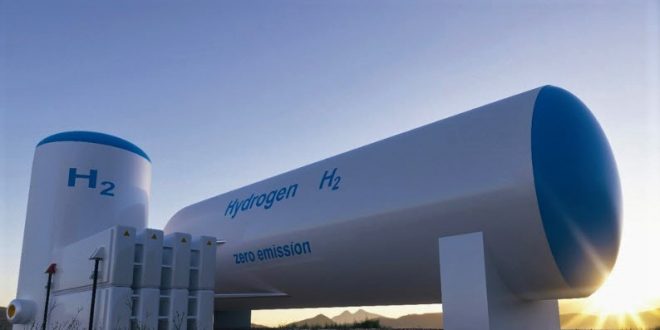The COVID-19 pandemic devastated the oil-dependent economies of the Gulf Cooperation Council (GCC) as prices of oil collapsed in 2020 due to a record low global demand for crude oil. The GCC includes the United Arab Emirates, Saudi Arabia, Qatar, Oman, Kuwait, and Bahrain. Global travel restrictions, stay-at-home orders, shutdowns of entire countries, and slowdown of industrial sectors put a break on the rapid spread of COVID-19 while drastically reducing the need for oil imports across the world.
In addition, an ill-timed oil price war between Saudi Arabia and Russia in March 2020, unfolded in the middle of the sharp decline of global demand for crude oil, leading to an oversupply that depressed prices even further.
An economic fallout for oil-exporting countries was inevitable when crude prices went negative last spring. They only bounced back last summer at around US$40 per barrel and stayed at that level for the rest of 2020. To remain fiscally sound, the breakeven oil price was US$77.90 in 2020 for Saudi Arabia, the world’s largest oil producer.
As a result of the oil price collapse, Saudi Arabia experienced its worst economic decline and budget deficit in years. The pandemic-driven social and travel restrictions also had a negative economic impact on the Kingdom, with 2.5 million pilgrims from around the world prohibited from attending the annual Hajj pilgrimage which was closed to all non-residents in 2020.
While global oil prices are slowly recovering with growing economic activity in many countries –largely thanks to rising vaccination levels and attendant falling COVID-19 infection rates, Saudi Arabia has learned one lesson from last year – it can no longer remain dependent on oil as a main source of its revenue.
The country’s de facto ruler, Mohammed Bin Salman (MBS), already laid out his goal to diversify the Saudi economy from oil in his Vision 2030 five years ago. The pandemic seems to be serving as an impetus to implement this vision after the bleak year for the Saudi economy. The Kingdom is now pivoting from oil to renewable energy sources, to secure its role as an important supplier of clean and renewable energy for a world that is increasingly embracing a carbon-free economic system.
But what is hydrogen? And why is it important? As such, hydrogen does not exist in nature on its own. Hydrogen is produced through a process called electrolysis that uses either fossil fuels, such as coal or natural gas, or renewable energy, such as sun, hydropower, and wind, to split hydrogen atoms from oxygen via an electric current. It takes a lot of energy to make hydrogen.
Currently, fossil fuels are used to make hydrogen either by gasifying coal or through a so-called steam methane reforming process. However, these methods defy the purpose of decarbonizing energy production. Alternatively, the manufacturing of hydrogen can be an entirely emission-free process if renewable energy is used to fuel the electrolysis of water instead of coal or natural gas. This clean technique of creating hydrogen is known as green hydrogen.
A relatively new and niche clean energy source, hydrogen has gained global popularity in recent months. These days, big businesses consider green hydrogen as a vital source of decarbonizing industrial production and specific forms of heavy-duty transportation that is hard to clean up and electrify, such as shipping, steel production, aviation, and long-distance trucking.
Today, there are two dozen developed countries that aim to boost investments in developing green hydrogen. But, Saudi Arabia plans to become the world’s largest producer of this chemical element and it has a huge potential to do so.
Although Saudi Arabia currently accounts for a small percentage of all renewable energy investments in the world, it has a competitive edge over other countries to create green hydrogen with year-round sunshine, plenty of wind, and vast areas of unused spaces. Indeed, Saudi authorities expect that hydrogen production will be cost-efficient by using low-cost solar power in the country.
For starters, Saudis are about to develop a massive 4-gigawatt plant called Helios in the northwestern part of the country that will produce green hydrogen. A Saudi power developer, ACWA Power, is partnering with Air Products and Chemicals, an American industrial gas company, to build Helios, which is expected to cost $US5 billion and is scheduled to be operational by 2025.
Helios will be entirely run by wind and solar energy. It will produce 650 tons of green hydrogen per day, which will help power MBS’ futuristic zero-emission city of Neom. But the Saudi government’s focus will be exporting hydrogen in the form of ammonia. Air Products will extract hydrogen from ammonia from Helios and sell it globally as a source of energy for trucks and buses.
According to the International Renewable Energy Agency (IRENA), an intergovernmental organization that promotes adoption of renewable energy, the current cost of creating a kilogram of hydrogen is about $US5. Saudi Arabia’s investment in hydrogen could bring down the cost of hydrogen production to an estimated US$1.50 per kilogram by 2030.
At that price, green hydrogen will be more competitive than brown hydrogen created by using fossil fuels today. Given that power generation from solar and wind technologies is already the cheapest source of electricity in many areas of the world, the cost-efficiency of green hydrogen production could be just over the horizon.
Potential buyers of Saudi green hydrogen are already trying to secure supplies. This March, Germany signed a declaration of intent with Saudi Arabia to cooperate in manufacturing, processing, and transporting green hydrogen. Indeed, importing hydrogen from Saudi Arabia is an attractive proposition for Germany and the rest of Europe, where the cost of producing green hydrogen is higher due to a more limited renewable energy potential on the continent compared to that of Saudi Arabia.
Nevertheless, the European Union considers green hydrogen a critical component of its decarbonization and climate action strategy. Whatever amount of green hydrogen that is not produced in the EU is likely to be fulfilled with imports.
Saudi Energy Minister Abdulaziz bin Salman said in February that his country would be ready to sell hydrogen to Europe. He also noted that Saudi Arabia would be open to the idea of building a pipeline to Europe to send liquified hydrogen if it made economic sense. Though Europe may not need to build a new pipeline from scratch to import hydrogen. It could use the existing network of its vast natural gas pipeline infrastructure to bring hydrogen from Saudi Arabia, through the existing Maghreb-Europe Gas Pipeline, for example.
Although green hydrogen is a promising revenue source, the amount of hydrogen that the Kingdom will sell to the world is unlikely to match the handsome profits it earns from exporting oil any time soon. In other words, fossil fuels are still more lucrative than hydrogen for the Saudis.
However, the writing is on the wall – the world is moving toward clean energy sources to cut greenhouse gas emissions. In this context, Riyadh is expected to lose billions of dollars from oil exports if it continues to stick with hydrocarbons. It seems the Saudis are acting on this realization.
More importantly, by prioritizing the diversification of its economy away from oil and investing in green hydrogen, the Saudi government is also sending a message to other major oil producers around the world that they too must keep up with the clean energy race if they do not want to be left behind.

 Iran Energy News Oil, Gas, Petrochemical and Energy Field Specialized Channel
Iran Energy News Oil, Gas, Petrochemical and Energy Field Specialized Channel



